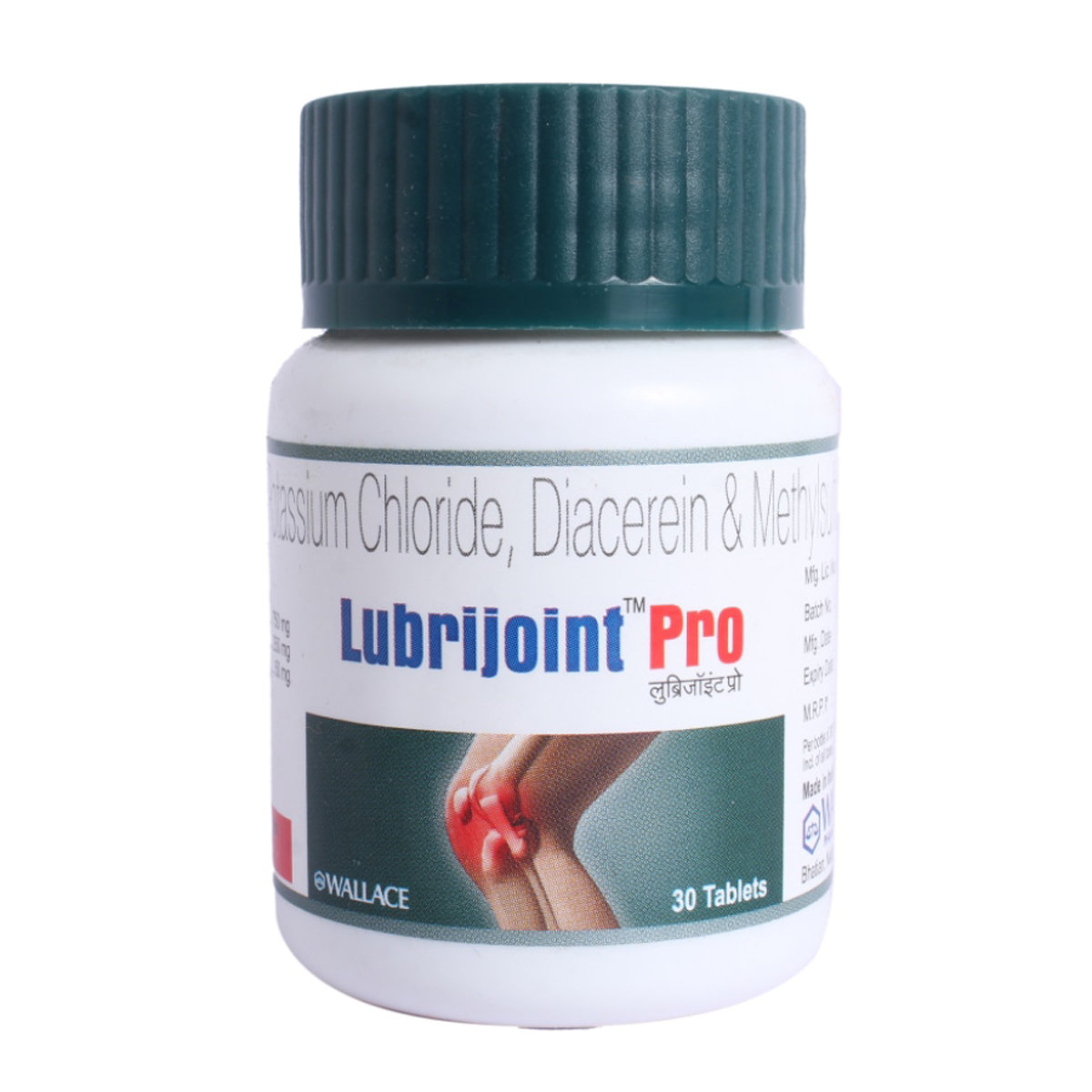- Home
- Medijoint Tablet
Medijoint Tablet Substitute
Medijoint Tablet Substitute
Medicine Composition:
DIACEREIN-50MG + DIMETHYL SULFOXIDE-250MG + GLUCOSAMINE-750MGAll Substitutes & Brand Comparisons
RX
Out of StockArthofix GM Tablet 10's
Ebonics Health Care
₹140
(₹12.32 per unit)
8% CHEAPERRX
Maxfree Tablet 10's
Nivian Pharma Llp
₹160.5
(₹14.45 per unit)
7% COSTLIERRX
Out of StockRin-GM Tablet 10's
Uzen Pharma
₹169
(₹15.21 per unit)
13% COSTLIERRX
Glortho DM Tablet 10's
Finecure Pharmaceuticals Ltd
₹192
(₹17.28 per unit)
28% COSTLIERRX
Out of StockCeriferin-Gm Tablet 10'S
Arrows 2 Pharmaceuticals
₹198
(₹17.82 per unit)
32% COSTLIERRX
Knee-Joint Tablet 10's
Indizen Pharmaceuticals
₹209
(₹18.81 per unit)
40% COSTLIERRX
Orthologic Tablet 10's
Chemo Healthcare Pvt Ltd
₹215.5
(₹19.4 per unit)
44% COSTLIERRX
Bestofix DM Tablet 10's
Livespan Pharma Etm Llp
₹227.5
(₹20.48 per unit)
52% COSTLIERRX
Out of StockCarti-Tone Tablet 10's
Anglo French Drugs & Industries Ltd
₹229.5
(₹20.66 per unit)
54% COSTLIERRX
Out of StockOrmeon-G Tablet 10's
Kameo Pharma Products Pvt Ltd
₹248
(₹22.32 per unit)
66% COSTLIERRX
Lubrijoint Pro Tablet 30's
Wallace Pharmaceuticals Pvt Ltd
₹833
(₹24.99 per unit)
86% COSTLIERRX
Out of StockArthraheal Tablet 10's
Biovzn Pharmaceuticals
₹299
(₹26.91 per unit)
100% COSTLIERRX
Out of StockJoint Well DN Tablet 10's
Rs Med Solutions
₹277.5
(₹27.75 per unit)
106% COSTLIERRX
Out of StockSynomil-DN Tablet 10's
Millennial Pharmaceuticals Pvt Ltd
₹279
(₹27.9 per unit)
108% COSTLIERRX
Out of StockDuraglide Max Tablet 10's
Uniprixx Laboratories Pvt Ltd
₹327
(₹29.43 per unit)
119% COSTLIER

When Should You Consider Switching from Medijoint Tablet ?
Patients may explore substitutes in the following scenarios:
- High monthly cost of Medijoint Tablet
- Non-availability in local pharmacies
- Generic recommendation by a doctor
- Side effects or better tolerability with alternatives
What to Know Before Switching
Before you switch from Medijoint Tablet to another medicine, here are some important points to keep in mind:
Same salt, different brands:
Most substitutes contain the same active ingredient - DIACEREIN-50MG + DIMETHYL SULFOXIDE-250MG + GLUCOSAMINE-750MG, but the fillers, coating, or manufacturing quality may vary slightly.
Consult your doctor first:
Even if the salt is the same, your doctor can confirm if the substitute is right for your condition, dosage, and health history.
Watch out for allergies or reactions:
Some people may react differently to certain brands due to inactive ingredients. If you notice any side effects, inform your doctor immediately.
Price ≠ effectiveness:
A lower-priced substitute doesn't mean it's less effective. Many generic medicines work just as well as branded ones.
Check the dosage form and strength:
Always match the substitute’s strength (e.g., 5mg, 10mg) and form (tablet, capsule, syrup) with what your doctor prescribed.
Uses
Medicinal Benefits
Medijoint Tablet improves joint's movement and flexibility by helping in the formation of cartilage (the soft tissue that cushions the joints) and lubricating the joints. It helps to repair joints and slow down the progression of the disease. It helps to relieve pain, swelling, and inflammation of the joints. Pain relief and improved motility can help you to perform daily activities easily.
FAQs
The substitutes of Medijoint Tablet contain the same active salt(s) - DIACEREIN-50MG + DIMETHYL SULFOXIDE-250MG + GLUCOSAMINE-750MG. However, they may differ in price, manufacturing quality, and inactive ingredients. Speak to your doctor to find a suitable option.
Switching to a generic substitute medicine in the place of Medijoint Tablet is often possible if it has the same salt, strength, and dosage form. But always check with your doctor before making any changes to your medication.
Generics versions of Medijoint Tablet are typically more affordable because they don’t include the original brand's research, development, and marketing costs. They contain the same active ingredient and are approved for safety and effectiveness.
Most people don’t notice any difference. However, some may react to different fillers or coatings. If you notice any unusual symptoms after switching, consult your doctor.
Make sure the new medicine has the same active salt, strength, dosage form. Always confirm the change with your doctor or pharmacist.
Substitutes of Medijoint Tablet meet the same safety and efficacy standards as Medijoint Tablet , but small differences in absorption or formulation can exist. A doctor can help you choose the right one for your needs.
Yes. Substitutes of Medijoint Tablet may vary in color, size, or shape due to differences in manufacturing and branding, but this does not affect how they work.
Yes, it’s generally safe to switch between multiple substitutes of Medijoint Tablet if they have the same salt and strength. However, always inform your doctor so they can monitor how your body responds.
Yes, many people safely use substitutes of Medijoint Tablet for long-term treatment. Just ensure it’s done under medical supervision.
If your symptoms stay under control or lab results remain stable, the substitute for Medijoint Tablet is likely working well. Regular follow-ups with your doctor are important.
Absolutely. Even with the same salt, small differences can affect how your body responds when switching from Medijoint Tablet to its substitute. Always consult your doctor before switching.
Medijoint Tablet contains Diacerein, Dimethyl sulfoxide, and Glucosamine. Diacerein is a slows down the breakdown of cartilage and helps to reduce pain and swelling. Dimethyl sulfoxide reduces the inflammation of the joints. Glucosamine reduces the breakdown of cartilage and helps to repair joints. Together, Medijoint Tablet can lower pain, swelling, and inflammation of the joints.
No, Medijoint Tablet contains glucosamine made from shellfish, so it is not recommended to use Medijoint Tablet in patients who are allergic to shellfish.
The common side-effects of Medijoint Tablet are headache, tiredness, nausea, abdominal pain, indigestion, onion-like taste in the mouth, diarrhea, discoloration of the urine, constipation, and wind (flatulence). These side-effects are usually mild and temporary. However, if any of these side-effects persist or get worse, inform your doctor immediately.
Medijoint Tablet may increase pressure inside the eye and worsen glaucoma. So, please consult your doctor to know the potential risks associated with this medicine if you have glaucoma.
Medijoint Tablet may affect eyes by increasing the pressure inside the eye. So, it is essential to undergo eye examinations regularly while using this medicine.
Buy best Orthopedics products by
Sun Pharmaceutical Industries Ltd
Cipla Ltd
Lupin Ltd
Intas Pharmaceuticals Ltd
Alkem Laboratories Ltd
Abbott India Ltd
Zydus Healthcare Ltd
Zydus Cadila
Torrent Pharmaceuticals Ltd
Ipca Laboratories Ltd
Macleods Pharmaceuticals Ltd
Ajanta Pharma Ltd
Dr Reddy's Laboratories Ltd
Glenmark Pharmaceuticals Ltd
Vasu Organics Pvt Ltd
Hetero Healthcare Pvt Ltd
Leeford Healthcare Ltd
Wallace Pharmaceuticals Pvt Ltd
Emcure Pharmaceuticals Ltd
Msn Laboratories Pvt Ltd
Overseas Health Care Pvt Ltd
Aar Ess Remedies Pvt Ltd
Alembic Pharmaceuticals Ltd
Cadila Healthcare Ltd
Chemo Healthcare Pvt Ltd
Corona Remedies Pvt Ltd
East West Pharma India Pvt Ltd
Eleadora Pharma
GlaxoSmithKline Pharmaceuticals Ltd
Inga Laboratories Pvt Ltd
Mankind Pharma Pvt Ltd
Medsol India Overseas Pvt Ltd
Micro Labs Ltd
Natco Pharma Ltd
Olcare Laboratories Pvt Ltd
Pharmed Ltd
Pulse Pharmaceuticals
Synovion Laboratories Pvt Ltd
Talent India Pvt Ltd
Virchow Biotech Pvt Ltd
Akumentis Healthcare Ltd
Ankaa Pharmaceutical
Bioelite Lifesciences Pvt Ltd
Blisson Mediplus Pvt Ltd
Cell Salve Pharmaceutical
Dolvis Bio Pharma Pvt Ltd
Eins Pharmaceuticals
Genesis Biotech
La Renon Healthcare Pvt Ltd
Neon Laboratories Ltd
Novartis India Ltd
Panacea Biotec Ltd
Pfizer Ltd
Prevego Healthcare & Research Pvt Ltd
Ronyd Healthcare Pvt Ltd
Steris Healthcare
Sundyota Numandis Pharmaceuticals Pvt Ltd
Actus Health Care
Alna Biotech Pvt Ltd
Alteus Biogenics Pvt Ltd
Anthem Bio Pharma
Aten Remedies Pvt Ltd
Athens Labs Ltd
Aureate Healthcare
Aurolab
Avrohn Pharma (I) Ltd
Biorange Biologicals Pvt Ltd
Biorex Healthcare Pvt Ltd
CMG Biotech Pvt Ltd
Canixa Life Sciences Pvt Ltd
Celebrity Biopharma Ltd
Celera Healthcare Pvt Ltd
Celon Laboratories Pvt Ltd
Comed Chemicals Ltd
Cyrus Remedies Pvt Ltd
Dru Pharma Pvt Ltd
Edura Pharmaceuticals Pvt Ltd
Elder Pharmaceuticals Ltd
Energize Pharmaceuticals (P) Ltd
Fibovil Pharmaceuticals Pvt Ltd
Goddres Pharmaceuticals Pvt Ltd
Gufic Bioscience Ltd
Hiilsen Life Sciences Pvt Ltd
Iifa Healthcare
Intra Labs India Pvt Ltd
Jagsonpal Pharmaceuticals Ltd
Krishgir Pharmaceuticals Pvt Ltd
Lg Life Sciences India Pvt Ltd
Mastro Biologicals Pvt Ltd
Maverick Pharma Pvt Ltd
Medicure Life Sciences Pvt Ltd
Medieos Life Sciences Llp
Medley Pharmaceuticals Ltd
Meyer Organics Pvt Ltd
Organic Pharmaceuticals Pvt Ltd
Qurewell Health Science Pvt Ltd
R B Pharmaceuticals
RPG Life Sciences Ltd
Ravinor Lifesciences
Regenix Drugs Ltd




